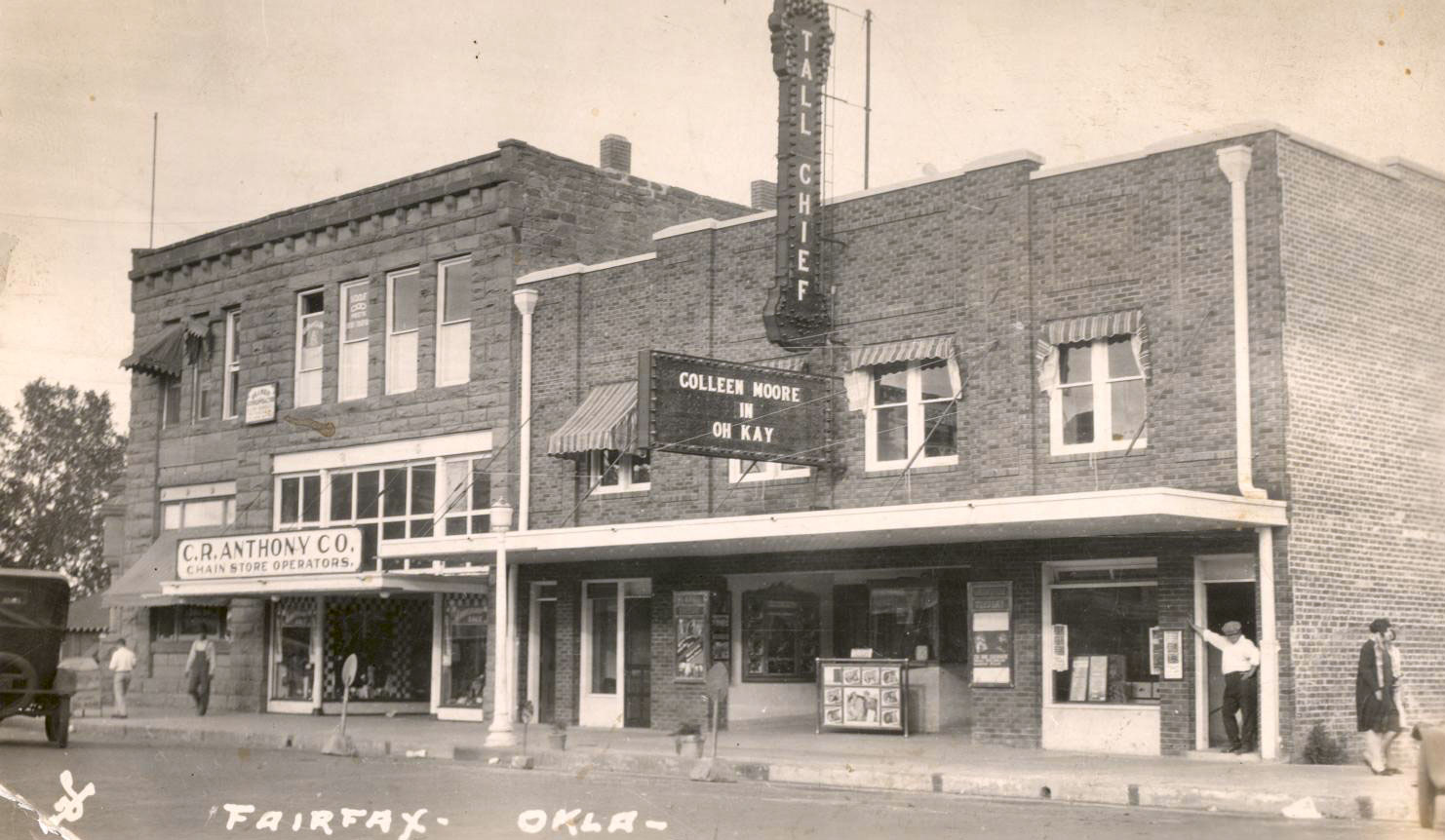
OSAGE MURDERS.
Estimates vary, but approximately twenty-four Osage Indians died violent or suspicious deaths during the early 1920s. The majority of these crimes occurred in or near Fairfax and were rarely investigated by local authorities; some were never solved. (The deaths of some alleged victims who lacked discernable wounds were simply ascribed to "indigestion," "peculiar wasting illness[es]," or "causes unknown.") The killings subsided after the arrest of William K. Hale in 1926. A native of Greenville, Texas, Hale, the self-proclaimed "King of the Osage Hills," was perhaps Osage County's most powerful figure. An affluent rancher with banking and business interests, he held political power and was active in Osage affairs. He was also the mastermind of a plot to acquire Osage wealth through murder.
In 1923, the height of the Osage oil boom, the Osage tribe earned more than $30 million in revenue. Under the Osage Allotment Act of 1906 all subsurface minerals within the Osage Nation Reservation (present Osage County, Oklahoma) were tribally owned and held in trust by the U.S. government. Osage mineral leases earned royalties that were paid to the tribe as a whole, with each allottee receiving one equal share, or headright, of the payments. A headright was hereditary and passed to a deceased allottee's immediate legal heir(s). One did not have to be an Osage to inherit an Osage headright.
William K. Hale encouraged his subservient nephew Ernest Burkhart to marry Mollie Kyle, an allotted full-blood Osage. Her mother, Lizzie Q. Kyle, resided with Mollie and Ernest in Fairfax. At the time of Lizzie's death in July 1921 (poison was suspected), she possessed three full headrights in addition to her own, having inherited those of her deceased first husband and two daughters. Lizzie had recently lost another daughter, Anna Brown, who had been shot to death during the early hours of May 22, 1921. Henry Roan, Lizzie's nephew, met a similar fate in January 1923. (It should be noted that Hale was the beneficiary of Roan's $25,000 life insurance policy). And, on March 10, 1923, Lizzie's daughter Rita Smith, Rita's husband William E. "Bill" Smith, and their housekeeper Nettie Brookshire died when their Fairfax home was destroyed by an explosion. With Rita's death, Mollie and Ernest Burkhart inherited a fortune from her mother's and sisters' estates. Had there been no intervention, in all probability Mollie, already ill from poison, and Ernest would have soon died, with the manipulative Hale receiving the Kyle-Burkhart estate.
In March 1923 an alarmed Osage Tribal Council sought U.S. government intervention in the growing number of Osage murders, including those of Joe Grayhorse, William Stepson, Anna Sanford, and others outside the Kyle family. In response, the U.S. Bureau of Investigation (today's Federal Bureau of Investigation or FBI) sent agents to Osage County. Among them were special undercover officers who took the lead in the investigations. Their focus was the Roan murder that had occurred on restricted Indian land, giving federal authorities jurisdiction in the case. The agents met regularly to compare observations and noted the reoccurring names of William K. Hale, Ernest Burkhart, and John Ramsey.
Under interrogation Ernest Burkhart tied Ramsey to the Roan murder, and Ramsey, a local farmer-cowboy, admitted Hale had hired him to kill Roan. Ramsey also confessed his involvement in the Smith murders and not only implicated Hale as the ringleader in that crime too, but Henry Grammar and Asa "Ace" Kirby as well. (It should come as no surprise that Grammar and Kirby, both notorious individuals in their own right, died under separate but suspicious circumstances soon after the Smith murders.) Convinced of their case, the federal agents, assisted by state officers, took Hale, Burkhart, and Ramsey into custody in January 1926, and in April charged Kelsie Morrison and Byron Burkhart, Ernest Burkhart's brother, with the murder of Anna Brown. Ramsey later recanted his confession, but Hale maintained his innocence.
Between June 1926 and November 1929 the defendants were tried in state and federal courts at Guthrie, Oklahoma City, Pawhuska, and Bartlesville. The trials, with their deadlocked juries, appeals, and overturned verdicts, received national newspaper and magazine coverage. In June 1926 Ernest Burkhart pleaded guilty and received a life sentence in the Oklahoma State Penitentiary at McAlester for the murder of William E. Smith. Turning state's evidence, Burkhart testified against Hale and Ramsey, who, in January and November 1929, respectively, were sentenced to life imprisonment in the Federal Penitentiary at Leavenworth, Kansas, for the murder of Henry Roan. A petty criminal, Kelsie Morrison admitted he had killed Anna Brown at Hale's request. Morrison was already serving time in November 1926 when he received a life sentence for Brown's murder. Byron Burkhart, Morrison's accomplice, turned state's evidence and was not tried for the crime.
Despite Osage protests Hale, Ramsey, and Ernest Burkhart, were eventually paroled. More surprising, Burkhart received a full pardon from Oklahoma governor Henry Bellmon in 1965. To prevent another "Reign of Terror," as this dark period in Osage tribal history is often referred, after 1925 federal law prohibited non-Osages from inheriting the headrights of tribal members possessing more than one-half Osage blood.






